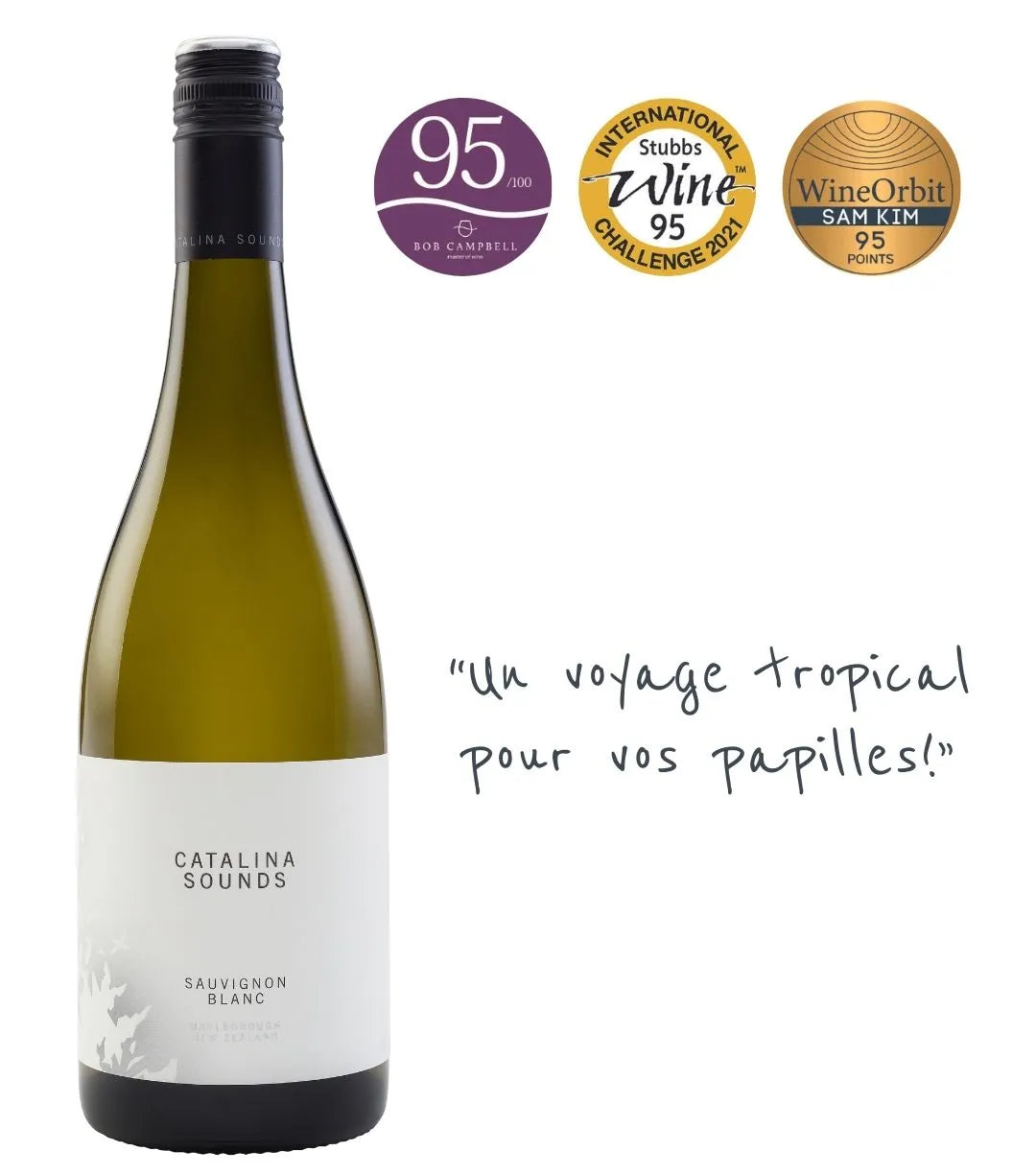Sauvignon: Dry or Sweet? We help you make the right choice!
Sauvignon Blanc is the quintessential aromatic grape variety. Cultivated and appreciated worldwide, it is mainly known for producing dry, lively, and expressive white wines. But it can also be used in blends for sweet or dessert wines, where it adds a beautiful freshness. So, what should you remember? We explain everything!
What is the difference between dry and sweet white wine?
The distinction between dry and sweet white wine is based on the amount of residual sugar remaining after fermentation:
Dry white wine is not sweet or very mildly sweet. It contains less than 4 g/L of sugar. It is characterized by a lively, fresh, and mouth-watering style, with a nice tension on the palate.
Sweet white wine contains between 12 and 45 g/L of sugar. It offers a rounder texture, aromas of ripe fruit, and a smoother sensation in the mouth.
Beyond 45 g/L, the wine is considered a dessert wine, richer and more concentrated, often paired with gourmet dishes.
But let’s return to our beloved Sauvignon grape: how does it express itself in these different wine styles?
Sauvignon Blanc: King of Dry Wines, Ally of Sweet Wines
Although Sauvignon can be made in various styles, it is primarily known for producing dry white wines. There are two major dry Sauvignon styles that are recognized worldwide today:
Dry Sauvignon: Two Major Styles to Know
1.Sancerre and Pouilly-Fumé Wines
The Centre-Loire region is the historical birthplace of Sauvignon Blanc and a reference for lovers of dry, mineral wines. Sancerre and Pouilly-Fumé wines are known for their finesse, tension, and freshness. They offer citrus aromas (lemon, grapefruit), white-fleshed fruit, and mineral notes (flint, gunpowder).
2."Savvy B" from Marlborough (New Zealand)
On the opposite end, Marlborough Sauvignon wines revolutionized the market with their explosive aromatic intensity. True ambassadors of New Zealand wines, they exude exuberant notes of tropical fruits (mango, passion fruit), gooseberry, and a strong vegetal touch (boxwood, cut grass). The sunnier climate and modern winemaking techniques produce wines that are fruitier and more generous.
In addition to these two references, interesting dry Sauvignons can also be found among wines from South Africa and Chile, often with a profile somewhere in between: both fruity and fresh.
Sweet Sauvignon: A Supporting Role for Freshness
Although Sauvignon Blanc is rarely vinified alone as a sweet wine, it plays an important role in the blending of sweet and dessert wines. Its natural acidity balances the sugar and adds freshness and liveliness, preventing sweet wines from feeling heavy.
It can be found in:
- Sweet wines of Bordeaux (Loupiac, Côtes de Bordeaux, Sainte-Croix-du-Mont): Here, it is often blended with Sémillon, which adds richness and volume, and Muscadelle, which brings floral notes.
- Côtes de Gascogne: Where Sauvignon Blanc is mainly blended with Gros Manseng, which adds fruit and roundness.
- Sauternes: A great dessert wine where Sauvignon plays a secondary but crucial role. It is blended with Sémillon to produce wines with great complexity, featuring notes of honey, apricot, and spices.
Why can a dry Sauvignon seem sweet?
Sometimes, a Sauvignon vinified as dry can give the impression of roundness and softness. This is due to several factors:
Climate
In warmer regions, like California, Australia, or certain areas of Chile, Sauvignon grapes reach a higher level of ripeness. This develops aromas of ripe and tropical fruits (pineapple, mango), creating a more indulgent sensation.
A milder acidity: In these climates, the natural acidity of Sauvignon is often less sharp than in regions like the Loire or New Zealand, which enhances the perception of softness on the palate.
Winemaking techniques
Aging on lees: Adds a creamier texture and brioche notes.
Aging in oak barrels: Imparts aromas of vanilla, hazelnut, and a certain roundness.
Result: Even without residual sugar, some Sauvignons may seem sweeter or fuller on the palate.
Dry Sauvignon or Sweet Sauvignon: Which to Choose?
The choice depends on your taste and the occasion:
Dry Sauvignon → For a lively and refreshing wine, ideal with seafood, goat cheese, or as an aperitif.
Sauvignon in a sweet blend → For a flavorful but balanced wine, perfect with exotic or spicy dishes.
Sauternes (with Sauvignon) → For a richer experience, to pair with foie gras or a dessert.
In Summary: Dry by Nature, Essential in Sweet Wines!
If you’re looking for Sauvignon Blanc, you’ll mainly find dry wines, with two major styles: the mineral tension of Sancerre and Pouilly-Fumé, and the fruity explosion of Marlborough. In its sweet or dessert wine form, Sauvignon plays a key role in blends, adding freshness and balance.
So, will you go for a dry Sauvignon or one in its sweet version? The choice is yours!






